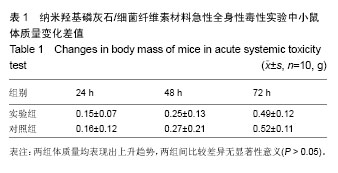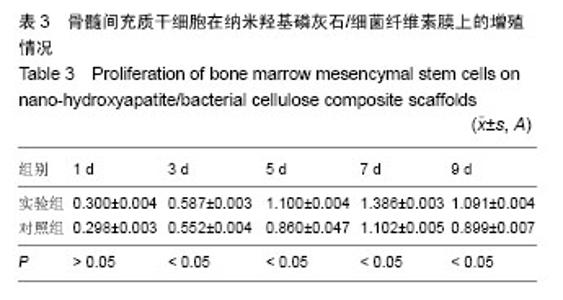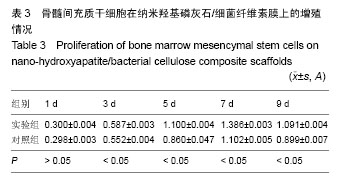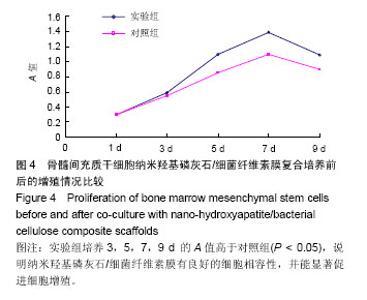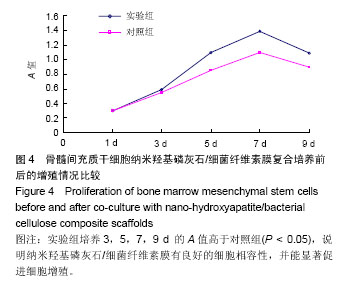| [1] 胡藴玉.现代骨科基础与临床[M].北京:人民卫生出版社, 2006: 151-153.
[2] Benoit C, Pierre L, Cécile L. Bioreactors for bone tissue engineering.Int J Artif Organs.2011;34(3):259-270.
[3] Mohamed NR,Delbert ED,Sonny B.Bioactive glass in tissue engineering. Acta Biomaterialia.2011;7:2355-2373.
[4] Cao H,Kuboyama N.A biodegradable porous composite scaffold of PGA/β-TCP for bone tissue engineering. Bone. 2012;46:386-395.
[5] Macchetta A, Turner IG, Bowen CR. Fabrication of HA/TCP sca?olds with a graded and porous structure using a camphene-based freeze-casting method.Acta Biomaterialia. 2009;5(4):1319-1327.
[6] Hideki Y,Akira M.Bone tissue engineering with porous hydroxyapatite ceramics.J Artif Organs. 2013;8:131-136.
[7] 唐爱民,宋建康,王菊芳.纤维素组织工程支架的研究进展[J].纤维素科学与技术,2011,19(1):64-71.
[8] Verma V, Verma P, Ray P, et al. 2,3-Dihydrazone cellulose: Prospective material for tissue engineering scaffolds.Mater Sci Eng C.2008;28:1441-1447.
[9] 施洪臣,周强,许建中.组织工程中胶原支架材料的研究进展[J].中华创伤骨科杂志, 2006,8(10):974-976.
[10] Zangi L,Rivkin R,Kassis I,et al.High-yield isolation, expansion, and differentiation of rat bone marrow-derived mesenchymal stem cells with fibrin microbeads.Tissue Eng. 2011;12(8): 2343-2354.
[11] Heinemann C,Heinemann S,Bernhardt A,et al.In vitro osteoclastogenesis on textile chitosan scaffold.Eur Cell Mater. 2010;19:96-106.
[12] Dereure O. Hyaluronic acid and immunity. Ann Dermatol Venereol. 2010;137: 26-29.
[13] Amir AA,Niamh AP,John PG,et al.development of a biomimetic collagen-hydroxyapatite scaffold for bone tissue engineering using a SBF immersion technique. J Biomed Mater Res.2012;2:584-591.
[14] 高川,万怡灶,何芳,等.细菌纤维素组织工程支架的仿生矿化研究[J].科技导报,2008, 20(22):47-49.
[15] 许建中.骨组织工程相关研究新进展[J].中国修复重建外科杂志, 2010,24(7):769-775.
[16] Shivakumar IR, Diana MY,Allan MH,et al. Shaping the micromechanical behavior of multi-phase composites for bone tissue engineering. Acta Biomaterialia.2011;6: 3448-3456.
[17] Wang YZ,Huang Y,Yuan CD.Biomimetic synthesis of hydroxyapaite/bacterial cellulose nanocomposites for biomedical applications.Mater Sci Eng.2006;27: 855-860.
[18] Lu HH,Subramony SD,Boushell MK,et al.Tissue engineering strategies for the regeneration of orthopedic interfaces.Ann Biomed Eng.2010;38(6): 2142-2154.
[19] 陈宝林,王东安,封麟先.高分子组织工程材料在组织工程中的应用[J].中国组织工程研究与临床康复,2008,12(6):1189-1192.
[20] 陈宝林,王东安,封麟先.组织工程材料表面物理化学性质对细胞相容性的影响[J].中国组织工程研究与临床康复,2007,11(1): 197-200.
[21] Panetta NJ,Gupta DM,Quarto N,et al.Mesenchymal cells for skeletal tissue engineering.Panminerva Med.2012;51:25-41.
[22] Sujata KB. Tissue engineering for clinical applications. Biotechnol J.2010;5: 1309-1323.
[23] Laurence D,Maylis D,Philippe J,et al.Concise review: Embryonic stem cells:A new tool to study osteoblast and osteoclast differentiation.Stem Cells.2009;25:544-552.
[24] Pommet M, Juntaro J, Heng JY, et al. Surface modi?cation of natural fibers using bacteria:depositing bacterial cellulose onto natural fibers to create hierarchical fiber reinforced nanocomposites. Biomacromolecules.2012;9(6):1643-1651.
[25] Jiang LY, Li YB,Xiong CD,et al.Preparation and biological properties of a novel composite scaffold of nano-hydroxyapatite/chitosan/carboxymethyl cellulose for bone tissue engineering.J Biomed Sci.2009;16:65:1-10.
[26] Gisela H,Henrik B,Aase B,et al. In vivo biocompatibility of bacterial cellulose. J Biomed Mater Res.2006;76:431-438.
[27] Li J,Wan YZ,Li LF,et al.Preparation and characterization of 2,3-dialdehyde bacterial cellulose for potential biodegradable tissue engineering scaffolds. Mater Sci Eng C.2009;29: 1635-1642.
[28] 高川,万怡灶,何芳,等.细菌纤维素组织工程支架的仿生矿化研究[J].科技导报,2008, 20(22):47-49. |

